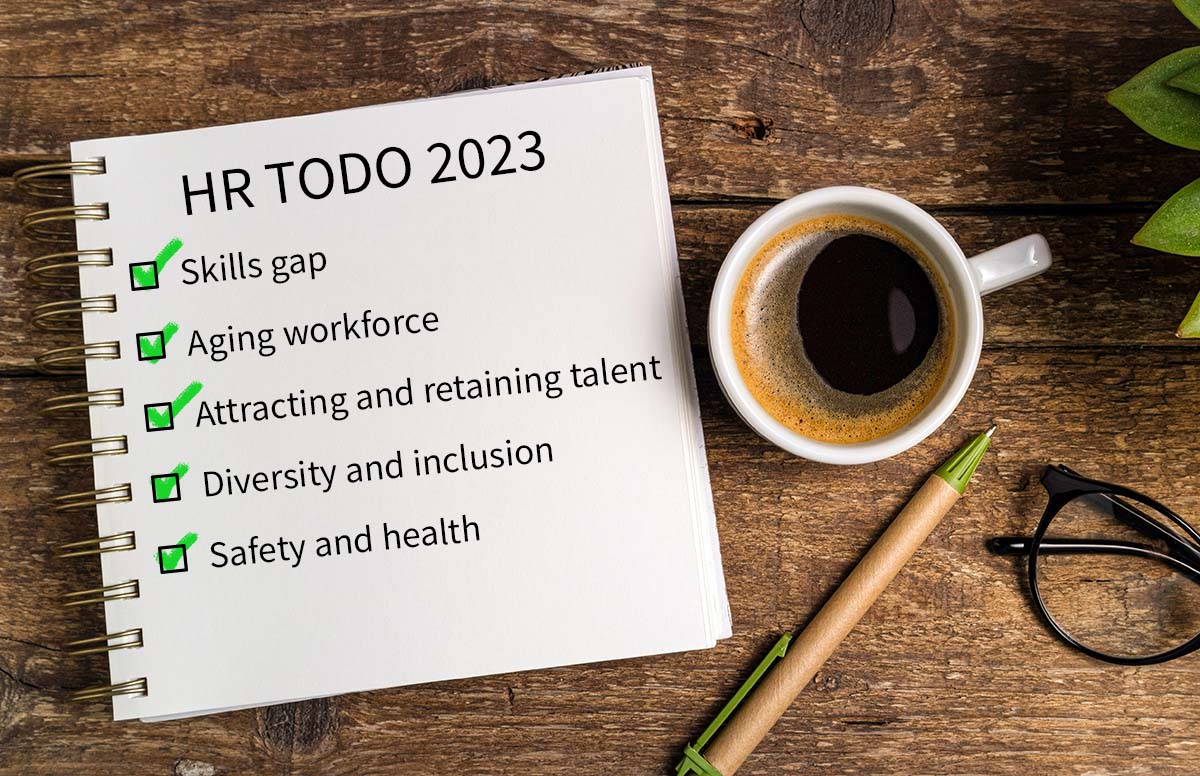 The manufacturing industry is facing several challenges related to staffing and employees in the coming years. Currently, one of the most pressing challenges for these companies is finding the qualified workforce needed to succeed in a changing industry. The industry is already facing some serious skill shortages that can only be overcome with the right HR strategies.
The manufacturing industry is facing several challenges related to staffing and employees in the coming years. Currently, one of the most pressing challenges for these companies is finding the qualified workforce needed to succeed in a changing industry. The industry is already facing some serious skill shortages that can only be overcome with the right HR strategies.
Despite uncertain times where the number of candidates is increasing, there is no correlation to it actually becoming easier to find qualified candidates with the specialist skills that the industry is crying out for. It is important that companies in the manufacturing industry begin to work on a strategy for how to handle the risks of staffing shortages, such as lost revenue opportunities and difficulties in adapting to project-specific needs.
The biggest challenges the manufacturing industry faces in 2023:
We have compiled a list of what we have identified as the biggest challenges the manufacturing industry will be facing, which need to be included and addressed in the HR strategies.
Skills gap: The industry is undergoing a transformation due to technology such as AI and automation. This development creates a growing gap between the skills and knowledge employees currently have and the skills and knowledge that employers demand. Companies, with HR in the lead, need to plan for how to manage the need for workers to constantly adapt and learn new skills.
Aging workforce: The manufacturing industry has an aging workforce with many employees approaching retirement age. This can in turn lead to an even greater shortage of qualified employees if companies fail to find a way to transfer knowledge to the next generation. For example, investing in succession planning, trainee and training programs. Not addressing this issue could mean that many small and medium-sized manufacturing companies may never recover from losing employees with highly irreplaceable operational knowledge and experience.
Attracting and retaining talent: The manufacturing industry struggles to attract and retain top talent, especially in the face of competition from other industries that can offer higher salaries and more attractive working conditions. Companies need to invest in employee engagement and company culture to retain their employees. The industry also needs to strategize on how to attract young people who are increasingly less inclined to enter the industrial sector.
Diversity and inclusion: The industry has traditionally been very male-dominated, and there is a great need to work with diversity and inclusion to create workplaces that attract everyone. By enabling HR to work strategically with diversity and inclusion, it can help the companies in the sector to leverage a broader pool of talent and better reflect the demographics of their customer base.
Safety and health: Ensuring the safety and health of workers is a critical aspect of any manufacturing company. This can include measures such as implementing best practices for workplace safety, providing training and resources for workers, and promoting a healthy work-life balance.
HR trends in the manufacturing industry
In recent years, several significant changes have impacted the work of HR. These changes include the introduction of GDPR, the pandemic and most recently the recession. Despite the industry undergoing a technological transformation, digitalisation of HR's work is rarely involved. There is a great need to reduce the administrative burden on HR in the industry so that they can work more strategically and proactively on issues such as skills development, legal changes, or recruitment.
We are seeing an increasing trend in the demand for digital tools that allow HR to work effectively and efficiently, with smooth processes and minimal manual work. HR departments today increasingly function as strategic business partners with the mission of supporting the development of the business. Both when it comes to strategic work but also in providing important decision-making data in the form of reports and analyses.
Manufacturing companies are experiencing an increasingly greater need to automate the employee lifecycle, covering everything from recruitment, onboarding, absence management, salary review, skills development, and GAP analysis. By having all information about the employees in one place, HR will also have the means and insight to address the challenges we previously mentioned. It provides HR with the ability to easily find information about employee skills, identify training needs, certificates, or map out succession planning.

